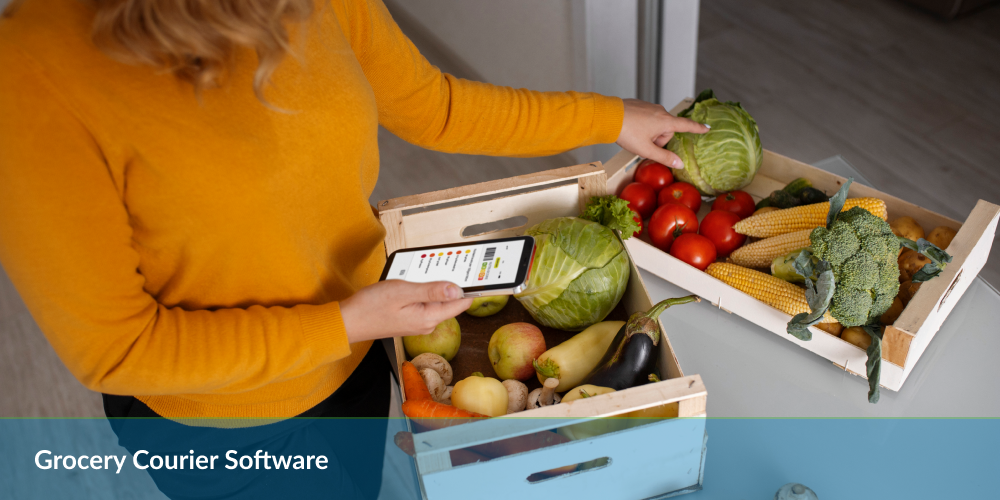Table of Contents
Technology makes everything better – but only if it is implemented in the right way. In the past few years, we have witnessed a seismic paradigm shift in the way customers interact with their favorite brands. They have also developed new purchasing habits and behaviors and rely on eCommerce more than ever before.
So, why are people spending more money on eCommerce than any other platform? Here are a few reasons why:
- The high adoption rate of eCommerce business model by the sellers
- New and improved technological improvements in online shopping
- More disposable income in the hands of the consumer
- The added convenience of shopping online
These factors and more have led the consumers through the COVID-19 pandemic and increased online sales by 24%, while brick-and-mortar stores have seen a decrease in their sales. This has prompted the physical store owners to create an online presence to compete with their rivals properly.
While the pandemic is ending, the trend of rising eCommerce businesses is far from over. World Economic Forum’s report suggests that the total number of vehicles involved in eCommerce delivery will increase by 36% by 2030. Moreover, last-mile delivery will continue to grow globally at a rate of 78% in the same time period.
As a result, we will witness more congestion – to the tune of 21%, release over 6 million metric tons of carbon dioxide, and have 32% more delivery-related emissions in the next few years.
Astounding, isn’t it? We are already grappling with poor air quality, water pollution, transportation emissions, urbanization, and other sustainability issues. Do we really need to add to our woes further with unsustainable last-mile delivery practices? With the world population expected to reach 8.5 billion, with 60% of it staying in urban areas by 2030, we can assume that the volume of online orders will only go higher.
Congestion isn’t something optional anymore. In fact, for urban areas where 85% of the delivery mileage consists of freight activity, congestion and emissions are becoming a way of life.
What if There Was a Way Out?
So, the question is, can we find a way to create sustainable last-mile delivery solutions in the near future? Can we leverage technology optimally and create awareness in the consumer’s mindset?
The answer is still inconclusive, but we know that customers are accustomed to faster deliveries and will desire even better services in the future. But, at the same time, the modern-day consumer also cares about the environment and would do their bit to reduce the carbon footprint.
In fact, 60% of customers said they wouldn’t buy products from companies that use unsustainable practices. And while it is encouraging to see aware consumers, things become even better when the organizations also take steps to improve their business practices towards sustainability.
Many brands are constantly working on mitigating the environmental damage and reducing their carbon footprint by optimizing every aspect of their logistics operations, including the last-mile delivery. Not only does it help the environment, but it also allows them to differentiate themselves in the eyes of their customers.
How to Create Sustainable Last-Mile Delivery Solutions
For many, music is the fuel that drives their soul but when it comes to last-mile deliveries, the only fuel customers want is speed. Increasing focus on same-day delivery adds a new level of pressure on the supply chain. In haste to make good on their promises, companies do not use their resources optimally and, in the process, add more emissions to the environment.
Since modern-day consumers are aware of the carbon footprint, they would be willing to opt for regular deliveries if they knew the damage caused by the same-day or rushed deliveries. But how can a company create sustainable last-mile delivery solutions? Let’s find out.
Route Optimization:
Route optimization is the most basic and integral part of a successful and sustainable last-mile delivery operation. It ensures that all members of the delivery fleet receive the packages in their assigned geolocation and follow a path free of congestion. It allows the delivery personnel to drive fewer miles and spend less fuel, leading to reduced emissions.
AI-Powered advanced route optimization software uses complex algorithms to cut down on excessive fuel consumption and allows your delivery vehicles to function optimally. Moreover, it reduces the amount of money spent on fuel, adding to your monetary savings.
Fleet Management:
Communicating incoming job requests is often a tedious task for any organization. Usually, the process is taken care of manually. For example, a person receives incoming requests and then manually dispatches them to the field personnel. It wastes a lot of precious time, and in many cases, a delivery person needs to return to the area where they delivered an order a few minutes ago.
It causes multiple trips, incurring increased fuel costs and additional man-hours for a single job. With an advanced field management system, you can easily manage your staff from a centralized application. In addition, your delivery staff can receive instant push notifications about an incoming delivery and accept it if they are near the destination.
No Emission Fleet:
While this is a tough one because not every business can replace their delivery vehicles with zero-emission vehicles, you can manage your fleet more effectively by integrating a delivery management system into your current vehicles.
How does it help? A delivery management system gives you regular data about the distance a vehicle has traveled. This enables you to stay on top of routine maintenance work, allowing the vehicles to mitigate breakdowns and ensure timely servicing.
Hyperlocal Model:
Strategic tie-ups are not uncommon in the world of logistics. For example, you can own a logistics company and contract with another company to operate in suburban areas where you don’t want to deploy your resources directly.
Similarly, businesses today are working on a hyperlocal model and delivering last-mile delivery solutions more sustainably. Delivering from stores is very popular amongst the Millennials and Generation Z, and this model works well in the grocery and retail sector.
Since grocery shopping is a recurring task, players like Dunzo and Swiggy have launched their hyperlocal delivery services to outsource the delivery needs within a geographical location. Going hyperlocal minimizes human errors, reduces customer attrition, and gives you a competitive advantage in the prevailing market.
Efficient Reverse Logistics:
With more online sales come more order returns. However, businesses haven’t paid a lot of attention to this touchpoint. Platforms like Amazon have higher conversion rates because of their easy return policies.
So, when choosing a last-mile delivery management application or software, make sure that you manage reverse logistics with the same green approach as your regular deliveries. Daily returns require human resources and cost more fuel on trips. Plan your return trip with strict timings and ensure that a single person can get most of the return orders in a single round.
Bundle Orders:
You can ask your customers if they would like to receive all their orders in a bundle instead of each item being delivered separately. Bundling multiple purchases directly impacts the last miles driven to reach a customer, reduces fuel consumption, and thus causes fewer carbon emissions. For example, Amazon offers its customers the option to receive all their orders on a specific day if there are multiple items in their initial order.
Is This Even Possible?
It might sound complicated at first, but creating sustainable last-mile delivery solutions is possible. As mentioned in the opening line of this article, technology makes everything better, but only if it is implemented right.
NetworkON is a one-stop solution for your delivery management and last-mile optimization needs. It offers a comprehensive set of features that optimize every aspect of your logistics operation, making it easier to have a sustainable delivery mechanism in place for your business. Here are a few features that NetworkON offers:
- AI-Powered Route Optimization
- Fleet Visibility Management
- Geofencing
- Automated Order Assignment
- Role Manager
- Performance Analytics
- Enhanced Communication
- Digital Proof of Delivery
- In-App Notifications
To take a look at the complete list of features, click here.
Next Step?
Secure your business’ future with software that champions green solutions and helps you create sustainable logistics operations for your business regardless of its size and scale.
Get in touch with our experts today and see the platform in action over a free demo. To know more, you can email us at info@networkon.io or visit our website. Also, visit our blog section to learn about how NetworkON is making a difference across different industries.
Frequently Asked Questions:
Q: Why is there a need for sustainable last-mile delivery solutions?
The rise of eCommerce has led to increased delivery demands, resulting in congestion, emissions, and environmental concerns. Sustainable last-mile delivery solutions aim to address these challenges and minimize the negative impact on the environment.
Q: How does customer awareness affect sustainable practices in last-mile delivery?
Many customers (60%) refuse to buy products from companies using unsustainable practices. This awareness encourages organizations to adopt sustainable strategies that benefit the environment and their brand reputation.
Q: What are the key challenges in creating sustainable last-mile delivery solutions?
Challenges include the pressure for faster deliveries, inefficient route planning, manual fleet management, and the need for environmentally friendly delivery options.
Q: How can route optimization contribute to sustainability in last-mile delivery?
Route optimization minimizes fuel consumption, reduces emissions, and saves costs. AI-powered software like NetworkON utilizes complex algorithms to ensure optimal delivery routes, enhancing efficiency and sustainability.
Q: What role does fleet management play in sustainable last-mile delivery?
Efficient fleet management, facilitated by advanced systems like NetworkON, minimizes unnecessary trips, reduces fuel costs, and enhances overall operational efficiency, contributing to sustainability.
Q: How can a delivery management system help achieve a no-emission fleet?
Integrating a delivery management system provides regular data on vehicle distance traveled, facilitating timely maintenance and reducing breakdowns. While not replacing vehicles entirely, it helps manage the fleet more effectively.
Q: How does efficient reverse logistics contribute to sustainability?
Efficient reverse logistics, managed through green approaches, helps handle returns precisely, minimizing fuel consumption and optimizing resources, contributing to overall sustainability.
Q: What features does NetworkON offer for sustainable last-mile delivery solutions?
NetworkON provides AI-powered route optimization, fleet visibility management, geofencing, automated order assignment, role management, performance analytics, enhanced communication, digital proof of delivery, and in-app notifications.





0 Conversations